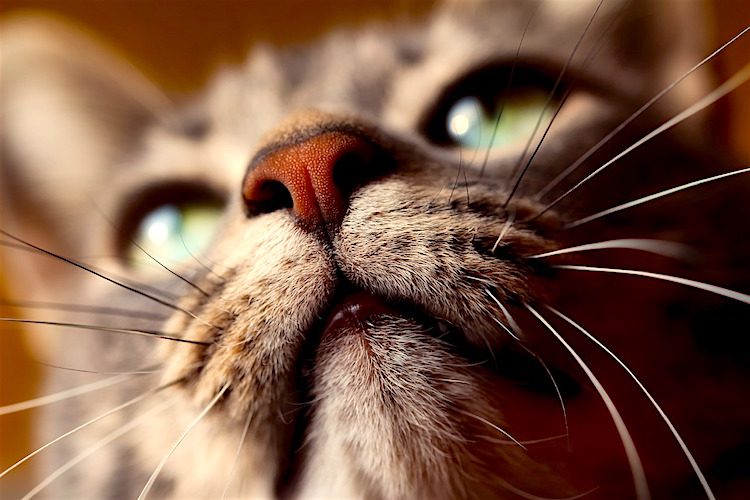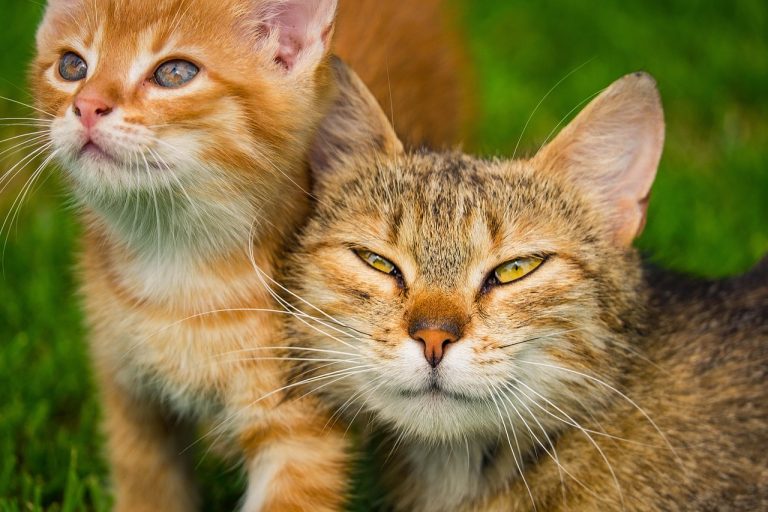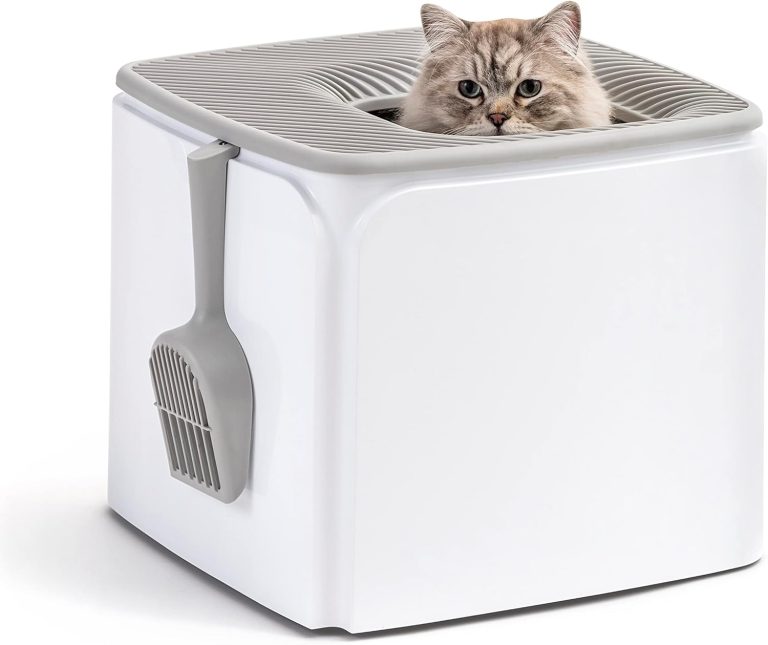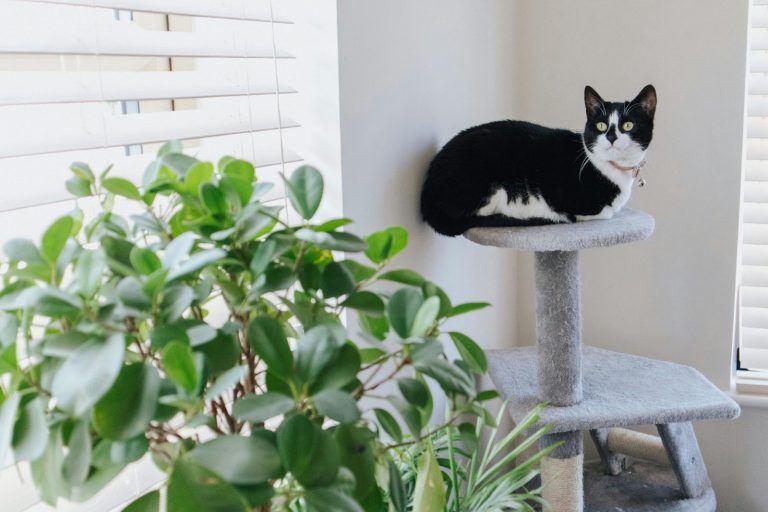Why Does My Cat Have a Crusty Chin? (It Could Be Feline Acne.)
When cats develop black lumps and bumps on their chins, chances are high that the culprit is feline acne.

Does your cat’s chin feel gritty and crusty? You may be wondering, “Why does my cat have a crusty chin?”
Most cats enter a state of semi-ecstasy when rubbed on that sweet spot under the chin. This is in part because it feels nice, and partly because they’re marking us as their territory.
But sometimes that velvet chin feels gritty and you look closely to find black bumps, scabs and perhaps even oozing spots. So, what’s going on?

Don’t leave your pet’s safety to chance
Sign up for Petful recall alerts today.

Why Does My Cat Have a Crusty Chin?
The most likely explanation for a crusty chin in a cat is a common condition — acne. Or, to be accurate, feline acne.
Indeed, feline acne shares much with teenage acne in people, except that it’s not a teenage problem and can occur at any age, especially during the cat’s senior years.
The Signs of Feline Acne
Take a close look at your cat’s chin:
- A cat with acne has spots, black bumps or even blackheads.
- Often the skin is sore, red and inflamed.
- Indeed, sometimes the fur falls out, leaving greasy-feeling skin.
Along with blackheads, there may be spots that rupture and leak pus. This is obviously irritating to the cat, and if they rub, those spots can become open sores and fully infected.

Why Cats Get Acne
This all comes down to problems with the grease glands (sebaceous glands) in the skin.
Normally, these glands produce natural oils that help condition the cat’s skin and keep it supple. In addition, that oil acts as a transport vehicle for feline pheromones that mark the cat’s territory — hence all that rubbing against doorposts.
Each sebaceous gland is linked to a hair follicle. But if that follicle becomes plugged, then the oil can’t escape onto the skin’s surface.
The trapped sebum oxidizes (goes black), and a blackhead forms. If this gets infected, this results in a spot.
Specific Causes of Feline Acne
OK, the causes of feline acne (that is, what causes that plugged or infected follicle) are numerous. Here are just some of the reasons:
- Plastic food bowls: Over time, the plastic scratches and harbors bacteria. When the cat eats, the chin rubbing against the contaminated surface can become infected. See my related article “Why You Should Clean Your Pet’s Food and Water Bowls Right Now.”
- Poor grooming: One reason acne is common in older cats is that arthritis makes it uncomfortable to clean their chin. Food debris, dander or grease accumulates, which can then block the follicles.
- Stress: Stress hormones, such as the natural steroid cortisol, increase natural sebum production, making the skin more greasy and prone to spots.
- Allergies: A sensitivity to allergens in food or the environment can cause skin inflammation and acne.
- Mites: The skin mite demodex may burrow deep into the hair follicles and plug them.
- Weak immune system: Another “senior factor” is a less robust immune system that isn’t great at keeping the bacteria on the skin’s surface in check.
- Hormones: These can stimulate excessive sebum production.

How We Diagnose Feline Acne
Your veterinarian has a fair suspicion of the diagnosis from the appearance of spots on the cat’s chin or around the lips. But the vet may then ask the deeper questions, such as “Why has this happened?”
If the cat is older, the vet may suggest screening to look for an underlying health problem that may weaken the immune system. Then, by treating this issue (along with improving chin hygiene), the body can heal the acne.
Other tests include:
- Skin scrapes (to look for mites)
- A biopsy (to check out cancers and autoimmune disorders)
- Culture (to check for ringworm or unusual bacterial infections)
How We Treat Feline Acne
Treating feline acne means a combination of removing trigger factors (such as swapping a plastic bowl for stainless steel) and improved skin hygiene:
- In mild cases, it helps to simply wash the cat’s chin after eating. The vet may suggest using a mild cleansing agent, such as chlorhexidine or salicylic acid, made up as a topical wash and used 2–3 times a day.
- If the chin is greasy due to overproduction of sebum, then a “follicle flushing” agent, such as benzyl peroxide, used as a skin wash helps. However, be careful — never use a human product since these are very concentrated and far too strong for delicate feline skin.
When deep infection is present, then a course of antibiotics may be required. This may be a topical cream or an oral antibiotic, depending on the severity of the infection.
And if the chin is sore and the cat keeps rubbing, then a low-dose steroid can do wonders for settling irritating inflammation and allowing things to heal.
More tricky cases may require beefed-up meds, such as oral synthetic retinoid, which help break up keratin and restore normal oil production.
This veterinarian gives some more tips on preventing and treating feline acne:

Control vs. Cure for Feline Acne
Cats love to bump and rub against our hands and legs. When it’s a full-face bump, this even has a special name: bunting.
As well as showing affection, the cat is spreading their scent to mark us as theirs. However, if those oil glands become plugged, you’ll once again be asking, “Why does my cat have a crusty chin?”
Next time you stroke your cat under the chin, make sure everything looks OK. Feline acne is common, and simple actions can eliminate the problem if it’s caught early. Even advanced feline acne can be brought under control so the cat is comfortable.
Whether it’s a cure by removing an allergen or control by reducing oil production, your cat’s velvet soft chin can be restored.
Next time your cat asks for a chin rub, take note if it feels gritty and consider the causes of feline acne.







